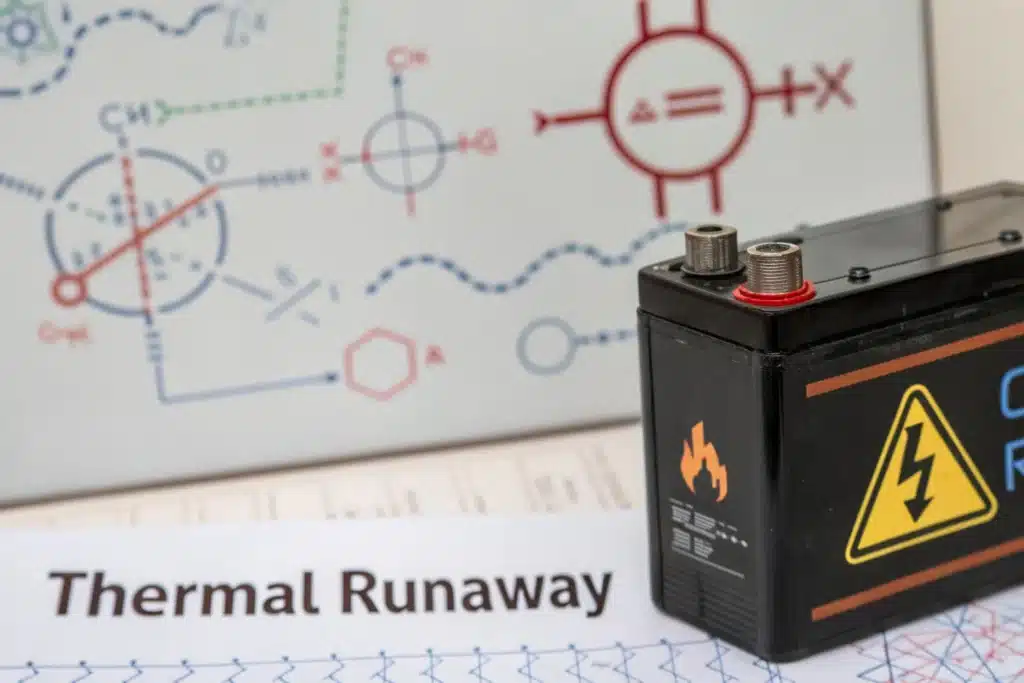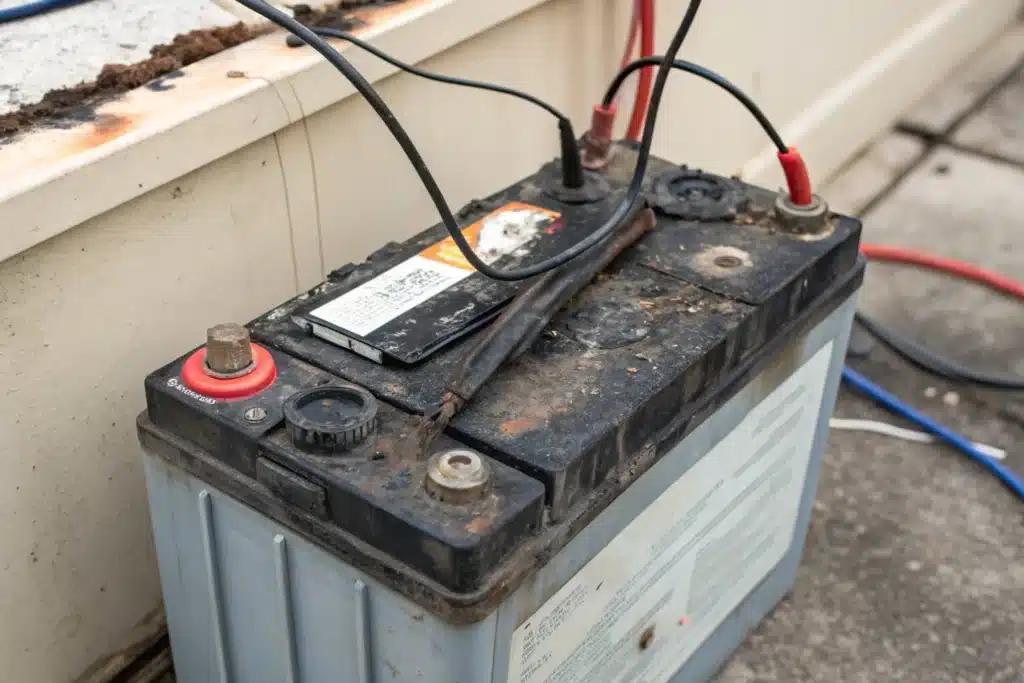Nowadays, lithium batteries are indispensable in our daily life, and their safety is self-evident. Thermal runaway is one of the most serious safety risks. This article will systematically and comprehensively explore the root causes, potential risks, and effective prevention measures and response strategies of thermal runaway.
Table of Contents
ToggleWhat is thermal runaway

Thermal runaway generally originates from an initial heat source, such as an internal short circuit or overheating, which causes the temperature inside the battery to rise. This accelerates the chemical reactions inside the battery, which are themselves exothermic, causing the battery to generate more heat. As a result, the temperature rises further, the reactions become faster, and more heat is generated, forming an uncontrolled, self-accelerating vicious cycle.
During the whole process, the corresponding reaction inside the lithium battery is as follows: an internal short circuit is triggered, which then causes the electrolyte to begin to decompose and produce a large amount of gas. When the internal pressure increases to a certain level, the battery will exhaust or release pressure. Ultimately, high temperature and combustibles may cause fire or even explosion.
Under normal circumstances, the heat generated by the battery can be dissipated in time and the temperature remains stable. However, when the heat generation rate exceeds the heat dissipation rate, the temperature threshold is exceeded. The temperature will inevitably continue to rise, eventually triggering what we call thermal runaway.
Root causes of thermal runaway

The following are the main reasons why thermal runaway occurs in lithium batteries.
Power abuse refers to the improper use of power-related operations. Overcharging, over-discharging, external short circuit and high-rate charge and discharge are the most common causes of power abuse.
Mechanical abuse, the battery is subjected to physical damage, such as squeezing or impact, puncture, vibration or shock, caused by external damage to the battery.
Thermal abuse: the battery is in an inappropriate temperature environment, and external high temperature and local overheating lead to thermal runaway.
Internal short circuit, especially a problem with the battery itself. It is usually caused by manufacturing defects and battery aging.
Risks and consequences of thermal runaway

The risk of thermal runaway is high and directly related to personal safety and potential losses.
The direct hazard of thermal runaway is the release of toxic and flammable gases, hydrogen and methane, which may intensify the fire. It is also accompanied by a large amount of smoke, which hinders escape or rescue, and contains harmful particulate matter. The ejected combustibles are ignited by the high temperature, forming a fire. The worst case scenario is an explosion.
A secondary risk is heat spread or diffusion. In a battery pack, the heat generated by thermal runaway of one cell may ignite adjacent cells, causing a chain failure like a domino, rapidly expanding the scale of the accident. It can be as small as burning an electronic device, as large as destroying an electric car or an entire energy storage station, or even causing a larger fire. In March, a Xiaomi car caught fire, killing three girls, most likely because of poisoning or suffocation caused by inhaling toxic fumes, and they were unable to escape in the first place.
The severity of these consequences is not static. It is affected by many factors such as battery health, battery type, SOC, battery pack design structure, etc.
Thermal runaway prevention strategies
A comprehensive, multi-level thermal runaway prevention strategy is provided below.
- Safety design of battery cells. Choose a safer chemical system, such as lithium iron phosphate battery cells. Choose high temperature resistant materials and add safety components such as fuses.
- Choose a high-quality BMS to monitor the battery voltage, current, and temperature in real time to prevent dangerous situations such as overcharging, over-discharging, over-current, and over-temperature.
- Optimize the structural design. Effectively dissipate heat through physical isolation or adding thermal insulation materials, heat sinks, air cooling, liquid cooling, and other methods, as well as a solid shell.
- From the source of materials to every step of the production process, strict inspection and aging tests are carried out before leaving the factory to screen out problematic products.
- During use, follow the manufacturer’s guidelines and do not overcharge or overdischarge at will.
Mitigation and management after thermal runaway occurs
If the preventive measures fail and thermal runaway really happens, what should we do? Try to reduce the loss and control the situation from the following different angles.
Early detection. Monitor specific gases that may leak early when the battery is abnormal, or monitor temperature changes inside the battery cell, so as to issue an early warning before thermal runaway actually occurs, or even before smoke and fire. The goal is to detect signs as early as possible.
Suppression system. To extinguish a lithium battery fire, it is not enough to simply isolate oxygen, cooling is the key. For example, a large amount of water is used for cooling, and some fire extinguishing agents are specially developed for lithium batteries. Different fire extinguishing strategies that may need to be adopted in different scenarios (such as electric vehicle fire vs. large energy storage power station) are discussed.
Emergency Procedures: Once a thermal runaway is confirmed, basic steps such as isolation, cooling and evacuation should be taken.
Conclusion
This article provides you with a comprehensive understanding of the causes, risks, and prevention strategies of thermal runaway. I hope your battery can supply power normally and you can use electricity without worry.
